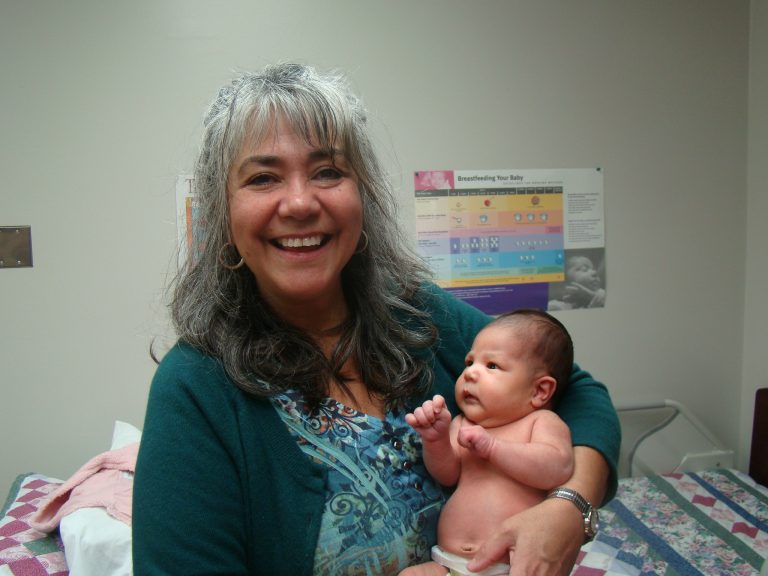I’m an aboriginal midwife, a Métis from the Winnipeg, Canada, area. But I have worked in Norway House, a First-Nation community, in a semi-remote area near Lake Winnipeg since 2006. I’ve been a midwife since 1982 and am a member of NACM, the National Aboriginal Council of Midwives.
I’ve always been drawn to helping underserved women have autonomy and power over their birthing choices. As I learned about the problem of evacuation for childbirth, that’s where my passion moved and where my focus has been for the past 15–20 years. So I advocate for choices, for healing of families, for respect, and for families and mothers to have the information and support they need to have a healthy pregnancy, give birth, breastfeed, and raise their family within a safe cultural context.
Norway House is a Cree community of over 7,000 people with 150–200 births per year. One of the biggest problems we have is fragmented care, which usually includes the need for women to travel long distances for birth, often unaccompanied. Some of the areas where First-Nation and other indigenous people live are remote, so it may be difficult to access care providers or to ensure the continuity of a caregiver who knows the woman. We need to facilitate birthing closer to home and provide escorts for all women who travel for birthing. We believe continuity of caregiver is a component of a high standard of care.
As individuals and as members of NACM, we are speaking to government to advocate for changes in our communities. We would like Canada’s federal and provincial governments to recognize the excellence of Aboriginal midwives and to support them to serve their own people in their own communities.
We want midwifery to retain the best traditional values and cultural practices along with the best evidence-based practices. Retaining traditional skills and knowledge was not initially seen as essential by mainstream midwifery education. Now we’re trying to incorporate some of those practices, many of which could be helpful, into low-resource areas. For example, until recently we didn’t have ultrasound equipment in Norway House, so we had to decide whether and how to evacuate at-risk mothers using basic skills of palpation and assessment. These skills also aid in the use and interpretation of technology when it is available. It turns out that traditionally trained midwives are often very good at those hands-on skills. The pride and sense of identity that is encouraged through cultural practices allow for healing of individuals, families, and communities.

We need a more level playing field regarding access to education. Many people cannot go to another province for four years for their training. NACM promotes the education and training of midwives as close as they can be to their own communities, where they are likely to stay and work and where they are in a supportive environment.
We need more midwives and other care providers in our underserved communities, and community driven models of care. And finally, we need to address the poverty and systemic violence affecting our women and children.
By Darlene Birch. Darlene Birch is an Aboriginal midwife working in Norway House, a First-Nation community near Lake Winnipeg, Canada. Darlene is a discussant on the issue of midwifery in challenging contexts on a plenary panel at the ICM 31st Triennial Congress in Toronto, Canada.
